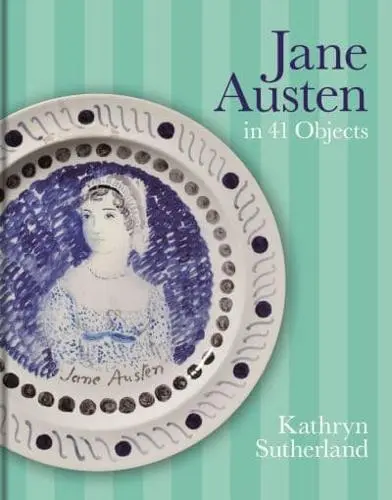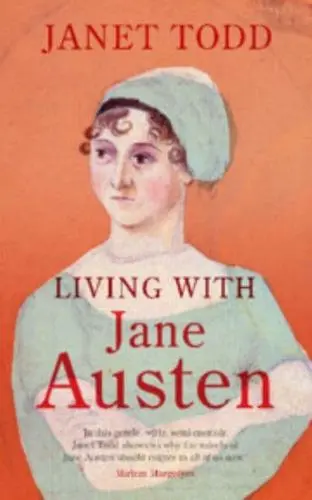Jane Austen 250th Events at Oxford Literary Festival

The last day of Oxford Literary Festival was crowded with good things but it seemed appropriate to attend both of the Jane Austen events as this is her 250th anniversary and there is much rejoicing among Janeites.
The first event was an interview of Professor Janet Todd by Suzi Feay (journalist and reviewer for the FT). Professor Todd is a novelist and academic, an honorary fellow of Newnham and Lucy Cavendish Colleges at the University of Cambridge, where she established the Lucy Cavendish Fiction Prize. Today in the glorious setting of Exeter College Chapel she talked about her latest book Living With Jane Austen.

Todd said that in her early years she didn't much like Jane Austen, and in fact she gave me a distinct impression that she still doesn't. She spoke about Pride and Prejudice as a "fantasy" centering around Elizabeth Bennet's visit to Pemberley, a desirable stately home that she says is presented as "property porn", and argued that being its owner is the main attraction of Darcy, who has not at this stage of the book shown Elizabeth Bennet any sign at all that he has changed.
She recapitulated some of the fashionable critical approaches to Jane Austen over the past sixty or seventy years. Once valued as a moralist, Austen was then seized on as a proto-feminist, and now the fashionable approach is to see her as a subtle, oblique social critic with concealed radical views. Does the mere fact that Mrs Elton comes from Bristol associate her with the slave trade?

Todd questioned many accepted "facts" about Austen, including the idea that her sister Cassandra burnt a lot of her letters. But the surviving letters actually have holes cut out of them with scissors by Cassandra, which indicates that there were things she wanted to hide.
The second event featured Professor Kathryn Sutherland of St. Anne's College, Oxford, who talked about her new book, Jane Austen in 41 Objects. The title poignantly recalls that Austen lived only to the age of 41, a cruelly short time by modern standards.
Sutherland, who is one of the trustees of Chawton Cottage, Jane Austen's home in Hampshire, has selected a series of objects including a teenage notebook, a muslin shawl, a wallpaper fragment, a tea caddy, the theatrical poster for a play she attended, and the dining-room grate at Chawton Cottage, each of which gives insight into a particular stage of her life. There are beautiful photographs and a commentary explaining the significance of each one.
Sutherland has written that what makes Jane Austen outstanding is her "emotional intelligence", a comment I have quoted in my own recent book, because it is so apposite and perceptive. She repeated it today and it is worth repeating. She also said that writing someone's biography is a bit like stalking, and that too is very true. She qualified it by adding "respectful stalking" but I know exactly what she means.

In her book she stalks Jane Austen from girlhood to maturity, and there we leave her because sadly she never arrived at old age.
The muslin shawl, embroidered by Austen herself, which is on display at Chawton Cottage, is a particularly good choice, because it could serve as a metaphor for Austen's novels. Muslin is simply a very delicate, soft cotton, not a rich fabric (like silk, used for fine gowns), but fashionable in Austen's day for its comfortable, breathable qualities, semi-transparency and graceful draping. Muslin was often used in the kitchen for straining cheese or beeswax. Puddings were cooked in muslin cloths - Christmas puddings or steak-and-kidney puddings. So it had very feminine and domestic connotations.
This shawl, or rather stole, is made of two lengths of muslin artfully joined together with decorative needlework, creating symmetry, and embellished with a border and tiny regular crosses producing a lace-like effect. In her books, Austen, likewise, takes the ordinary materials of everyday life, and crafts them together with delicate, exquisite detail, to create something tasteful and pleasingly designed: a work of art.
In reply to the question of whether Jane Austen was a feminist, Professor Sutherland replied no, because she was not a professional woman like Mary Wollestoncraft, and Austen valued her precarious position as a member of the leisured classes. I would challenge that. Didn't Austen become a working woman in the last six years of her life, when four of her novels were published? She once wrote, "I have written my way into four hundred pounds." That is the equivalent of at least £20,000 today. She was no longer totally dependent on her father or brother.
Sutherland herself has written about how much Austen enjoyed going to London to meet her publisher (whose wife's name was, she tells us, Anne Elliot) and how she relished shopping in Bond Street, spending her own earnings. And while she was not a feminist by 20th or 21st century standards, she was one by the standards of her time. She did not ask for sexual liberation, the vote or the right to be a vicar, but she questioned many things about the status quo.
Look at what she wrote in Northanger Abbey, "If a woman has any intelligence, she had better hide it ..."
To buy either of these books just walk into Blackwells or Waterstones.
Or you can order them online:
https://blackwells.co.uk/bookshop/product/9781851246267?src=1389975603&isbn=9781851246267
And
https://blackwells.co.uk/bookshop/product/9781009569316?src=1389975603&isbn=9781009569316
https://oxfordliteraryfestival.org/literature-events/2025/april-06/living-with-jane-austen